In recent years, real estate developers in the United States have found hot new listings on unique properties for sale: oversized post offices and banks and shuttered shopping malls, done in by the rise of email, online banking and online-shopping, and underutilized prisons, with more cells than they can fill.
The history of El Helicoide, a seven-story, concrete modernist shopping mall spiraling around a large hill that has become a prison in Caracas, Venezuela illuminates how political and economic forces can alter the fate of a building, particularly one fueled by the oil economy. Begun in Caracas, Venezuela in 1956, it currently serves as a police headquarters and jail for prisoners, some 80 to 100 of them, political offenders.
Celeste Olalquiaga, a cultural historian and author and the co-editor with Lisa Blackmore of Downward Spiral: El Helicoide’s Descent from Mall to Prison, due out on July 13th, believes that the project’s failure was largely due to political problems. “It failed as a shopping center but it works as a prison—works for cells without natural light, shooting ranges, and torture chambers,” she said, an edge in her voice. Speaking at a Center for Architecture (AIANY) panel on Proyecto Helicoide, accompanying a small exhibit there, Olalquiaga added that “there have been 70 days of continuous street protests in the city. More than 70 young students were killed by the police protesting a corrupt and criminal government over the past few months.”
At the beginning, the building, designed by the architect Romero Gutierrez and constructed during the reign of the dictator General Marcos Perez Jimenez (1948-1958), was understood as a great architectural triumph: conquering unruly nature, not through the lens of a European City, but through a native model. “Modernism in Venezuela rejected colonialism and it was full of optimism,” said panelist Monica Ponce de Leon, a Venezuelan-born architect who is the dean of the Princeton University School of Architecture.
Between 1936 and 1950, the population of Caracas doubled and gigantic housing schemes were built to eliminate the slums. Working on the assumption that the city was going to expand on a north/south axis, El Helicoide was located in the southwest. which was unfortunate because the city expanded in an east/west direction. Adding his voice to the panel discussion, architect and urban planner Ignacio Cardona explained that Caracas is a city full of fractures, some the result of geography, and others, the result of ordinance. Cardona said that the siting of El Helicoide resulted in an “isolation syndrome for the nearly 18,000 houses that surrounded the building.” When the city expanded to the east, middle and upper classes chose to live there. El Helicoide was located toward the southwest where it would not be used.
Still, in the beginning, everyone was optimistic. A model of the unique spiral-shaped building was the highlight of Roads, the 1961 MoMA show and the building, as an emblem of the new Latin America, was featured on the covers of numerous major magazines. The original design was grand: El Helicoide was to include large exhibition halls, a gym and swimming pool; restaurants, a multi-screened cinema, a five-star hotel and a heliport to fly passengers back and forth from the airport. At the top, there was to be a dome, designed by Buckminster Fuller. Of course, this was during the oil boom, when everything seemed within reach. Under the dictator Jimenez, many private ventures took off with Jimenez’s approval.
Ironically, it was democracy that pulled the plug on El Helicoide. “Once democracy came back,” Olalquiaga said, “the democratic president would not have anything to do with El Helicoide. Not one more brick would be laid (the building was made of concrete!)” Although there was only one year left to go to finish the building, it was left in raw concrete. Lawsuits followed, from the architect, the foreign and national banks who had invested in the project, and from the 320 storeowners who had bought spaces in the drive-in mall, each of which came with two adjoining parking spaces. Sadly over the next 10 years, the building was abandoned while the density of the slums surrounding it grew with a rural influx to the city. The Venezuelan government took over the site.
In a short time, everything started to fail. By 1979, 500 families were officially placed there, all victims of mudslides. “In no time,” said Olalquiaga, “there were 10,000 people with NO services squatting in the building.” While the local government gave them containers with water, there was no electricity. “The building had become a sleeping beauty, a white elephant and the Red Zone,” she said.
When the people were finally evicted, changing administrations came up with different proposals for the building. Of the 27 plans for the site, only two were ever started. In 1982, the idea was to turn it into a Museum of Anthropology, a cultural project that installed the originally designed dome at the top. But after the government changed, the two lower levels were given over to the intelligence police. Another failed idea in 1992-3 was the Centro Ambiental de Venezuela, designed by architects Julio Coll and Jorge Castillo, to house the ministry of the environment in the building. Despite its promise, the Centro was never inaugurated. Hugo Chavez, President of Venezuela from 1999 to 2013, wanted to do something in the building for street children,” but that, too, did not succeed.
Today, the only attention given to El Helicoide is by human rights groups who protest the torture that they say is currently going on there. “There’s lots of activism,” Olalquiaga said, “but also lots of repression.” She is critical of Goldman Sach’s recent decision to buy Venezuelan bonds at a 67 percent discount, seeing it as supporting the current repressive regime.
As Director of the Proyecto Helicoide, an independent initiative to culturally evaluate the site, Olalquiaga is convinced that the only redemption for the building is to give it to the surrounding community, San Agustin del Sur. “Right now,” she said, “it is like a UFO in their midst. But if some of the site was reconfigured, it could become a culture and sports center for neighbors, who live in the oldest and poorest slums in Venezuela.”
In the final analysis, she sees both El Helicoide and Venezuela as victims, because they placed middle and upper class interests above the common good. The book and the exhibit are an effort to make El Helicoide’s history visible and to provide readers and viewers with insight into the reasons that caused its painful downward spiral.
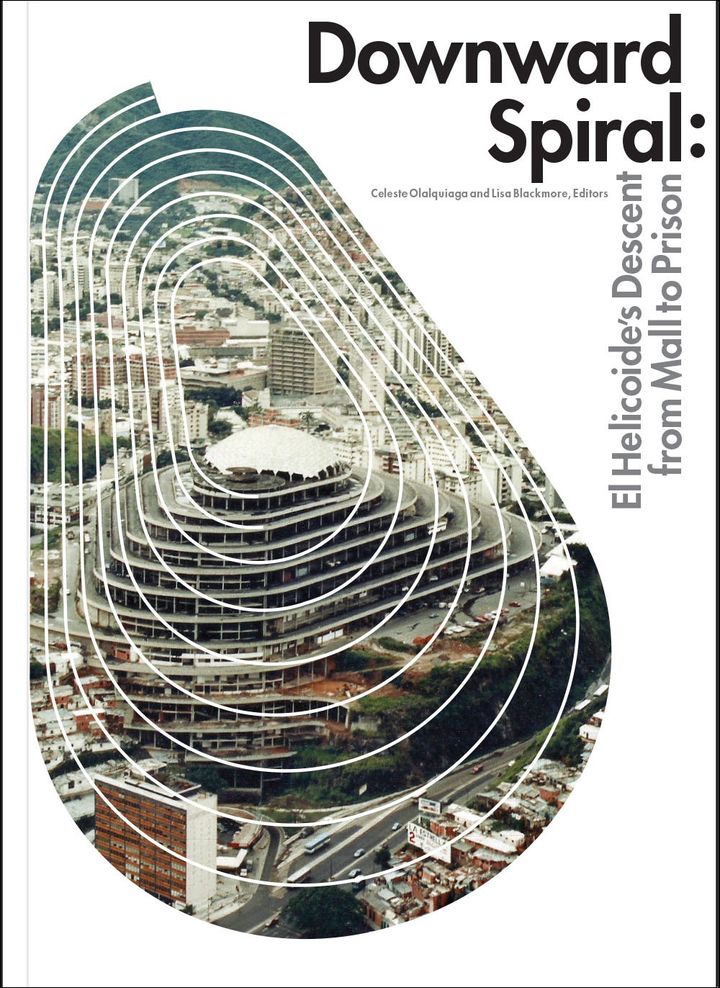
Downward Spiral: El Helicoide’s Descent from Mall to Prison, Published by Terreform, Urban Research (UR).
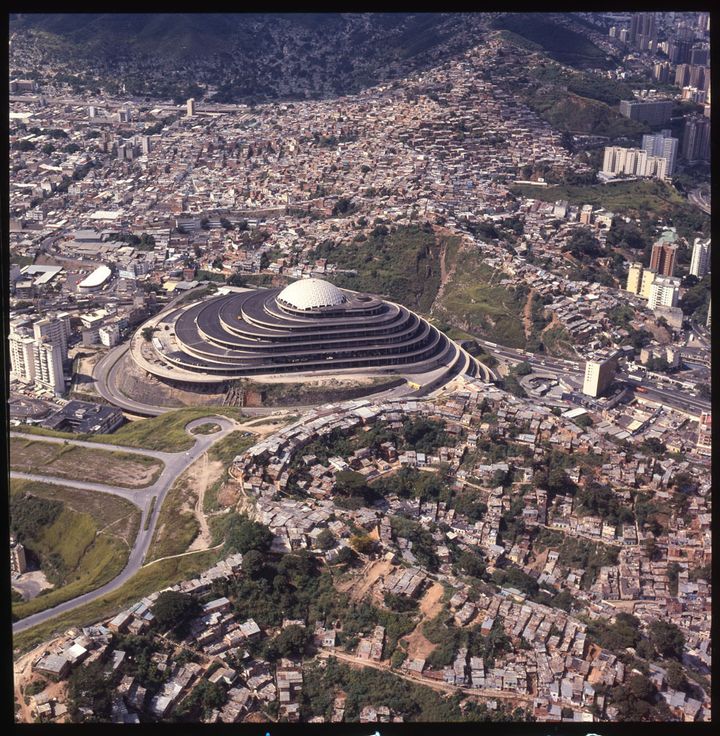
View from the North

Installation shot
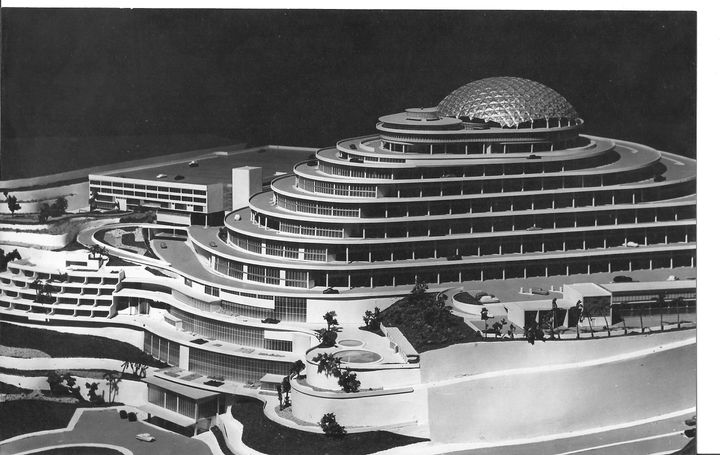
One of the original models
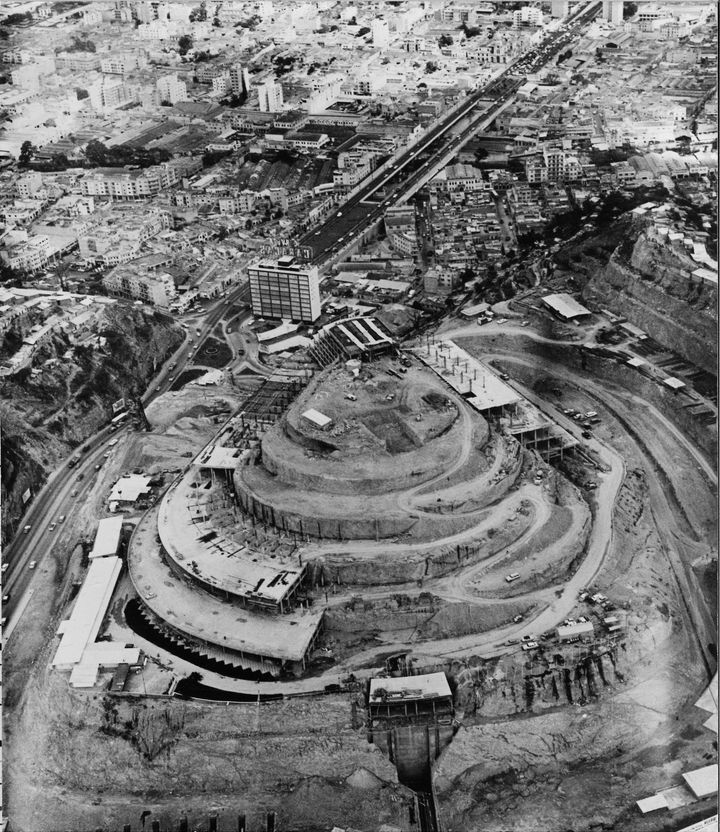
Land movement on Roca Tarpeya
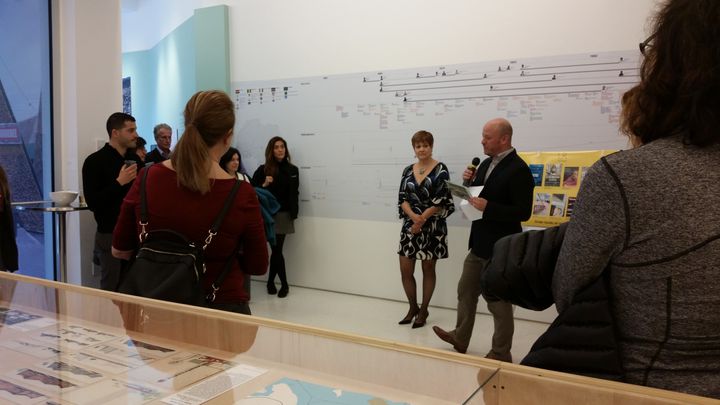
Exhibition Opening at AIANY
Exhibit: El Helicoide: From Mall to Prison at the Center for Architecture, 536 LaGuardia Place, May 9-July 13
Downward Spiral: El Helicoide’s Descent from Mall to Prison, co-edited by Celeste Olalquiaga and Lisa Blackmore, Terreform/Urban Research. AIANY BookTalk on July 13, 6:00 PM-8:30 PM. RSVP cschaulsohn@aiany.org